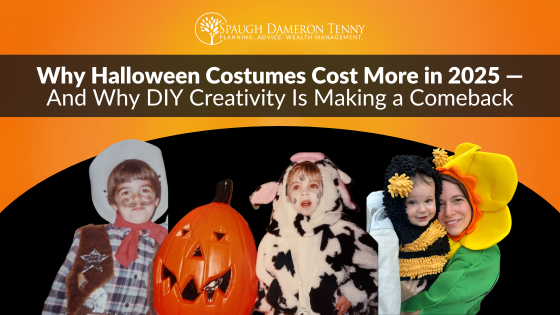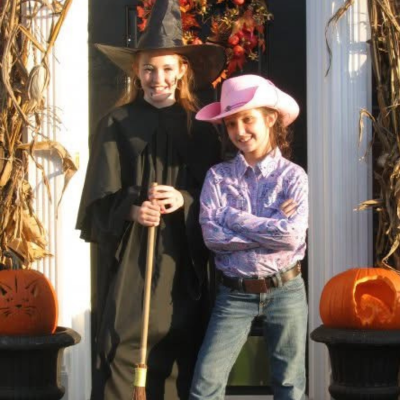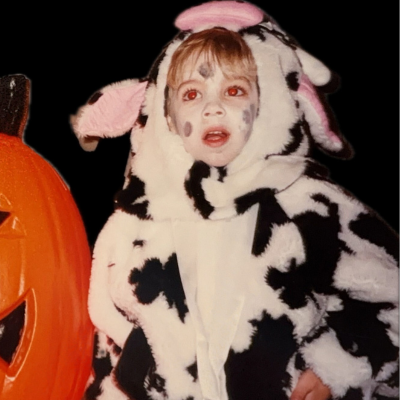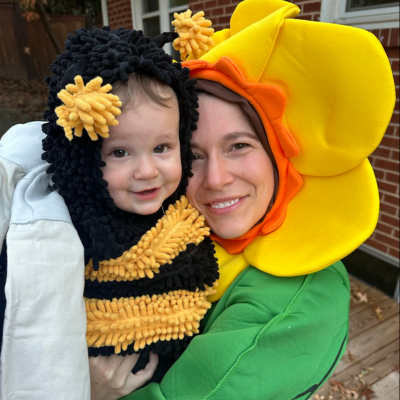Picture this: it’s the week before Halloween. A parent is standing in the costume aisle, holding up a superhero outfit and doing some quick math. The price tag reads $34.99, but last year it was $29.99. The fabric feels thinner, the accessories cost extra, and half the popular costumes are already sold out.
This year, the Halloween fright is less about haunted houses and more about the checkout counter.
Inflation isn’t new, and neither are financial surprises. But in 2025, tariffs are showing us just how unpredictable price increases can be, sometimes popping up in places we least expect.

Over the past several months, new and increased U.S. tariffs on imported apparel have added hidden costs throughout the supply chain. Manufacturers face higher material expenses, importers pay steeper duties, and retailers pass those costs to consumers.
According to CNN Business, CBS News, and the National Retail Federation (NRF), U.S. tariffs on imported goods climbed as high as 145% earlier this year before adjusting to about 30%.
Roughly 90% to 95% of Halloween products contain at least one component made overseas, most from China, so even small tariff changes have an outsized effect.
As a result, retailers say most costumes now cost $5 to $10 more than last year, and high-end options are up $20 to $30.
The NRF projects record Halloween spending of $13.1 billion, up from $11.6 billion in 2024, with the average shopper spending $114.45, about $11 more than last year. The average costume price is now $37.62, an 11% increase year-over-year.
| Item Type | 2024 Average | 2025 Average | Increase |
| Kids' Costumes | $29.95 | $34.95 | + $5 (+17%) |
| Adult Costumes | $45 | $60 - $70 | + $15 - $25 (+25-35%) |
| Pet Costumes | $20 | $25 - $30 | + $5 - $10 (+25-35%) |
| Overall Avg. Costume Price | $34 | $38 | + $4 (+11%) |
(Sources: CNN Business – Oct 2 2025; Yahoo Finance – Oct 2025; WUSA9 – Oct 2025; CBS News – Oct 2025; National Retail Federation 2025 Halloween Survey)
In response, many households are turning back to the “make it yourself” mindset. From social-media tutorials to community costume swaps, DIY Halloween is enjoying a major revival.
People are rediscovering the satisfaction of creating something original while keeping an eye on their budgets.
Retailers may offer fewer new styles and higher prices when tariffs change the cost picture, which nudges more shoppers toward DIY solutions and secondhand finds.
This trend also reflects a larger consumer reflex: when prices rise, people reclaim control by repurposing what they already own; a reminder that creativity often thrives under constraint.
This year, our team revisited some of our favorite childhood DIY costumes, creative, thrifty, and full of personality.
 |
 |
 |
 |
Here are a few of our favorites:
Shane Tenny, Managing Partner: A cowboy with a bandana tied around his neck, a flannel shirt, and a drawn-on mustache.
Rachel Adams, Research and Planning Analyst: Her grandmother made the witch costume for her mother in elementary school, and Rachel wore it years later.
Jordan Bilodeau, Director of Financial Planning: A tiny cow, complete with face paint and cow-print pajamas.
Shanda Bortner, Director of Client Experience: A handmade bee-and-flower combo with her son — proof matching costumes can be done with effort and imagination.
Store-bought pet costumes are feeling the price pinch, too, prompting more families to craft their own. 
Our insurance coordinator, Christina Acker Washington’s dog, Cash, rocked an adorable Cookie Monster look made from leftover fabric, pom pom balls, and glue.
Whether it’s a child’s cardboard robot or a dog in a DIY cape, homemade touches make memories and photos that last longer than the candy.
If tariffs can affect something as simple as a Halloween costume, they can also influence your financial life in subtle ways.
Hidden costs, shifting markets, and global changes all shape how far your money goes. Just like costume-making, good financial planning takes:
At Spaugh Dameron Tenny, we help individuals and families create financial plans that not only fit but are crafted with care; tailored to your priorities and flexible enough for life’s unexpected shifts.
Just like the best costumes, a strong financial plan starts with creativity and preparation. Let’s design a plan that fits you.
New tariffs on imported goods and rising material costs have increased prices by about 11% overall, with most costumes $5 to $10 higher than last year.
The National Retail Federation projects record spending of $13.1 billion, or $114.45 per person, up about $11 from 2024.
About 90% of costumes and decorations include at least one component made overseas, making them vulnerable to tariff changes.
CRN202810-9720750
.png?width=100&height=100&name=Untitled%20design%20(16).png)
This article was written in collaboration with the financial professionals at Spaugh Dameron Tenny. Our team features CERTIFIED FINANCIAL PLANNER® professionals, Certified Exit Planning Advisors, insurance specialists, investment coordinators, and experienced analysts – all dedicated to addressing the unique financial needs of physicians, dentists, executives, and retirees. With decades of collective experience, we provide clear and comprehensive guidance in all areas of financial planning, wealth management, retirement planning, investment strategies, and practice transitions.
After more than two decades helping families across the country, I’ve learned something surprising: Even highly successful people don’t always know ...
Read More →When Katie Phillips entered her quarterly financial planning meeting, she was carrying more than the weight of her work laptop.
Read More →